23 Toxic Chemicals You Come into Contact with on a Daily Basis
Turns out there's a miniature Chernobyl hidden around every corner.

As long as you're not spending all your time working away in a coal mine, you're probably not too concerned about coming into contact with toxic chemicals. Unfortunately, some of the most dangerous ones are closer to home than you think, showing up frequently in your everyday life. It's definitely not comforting by any means, but the chemicals in everything from shampoo and yoga mats to cooking pans and drinking water have been found to cause disease, cancer, and other health issues, and these are the ones you should be aware of in order to stay safe.
1
Azodicarbonamide

Whether it's from using a yoga mat or wearing flip-flops, the light, spongy plastic material in both products—and those similar—commonly contain azodicarbonamide. The chemical might seem harmless—especially since it's also something bread companies use to make softer, more attractive-looking food—but the World Health Organization (WHO) has linked it to increasing the risk of respiratory issues or skin irritation with repeat exposure.
2
1,4-Dioxane

The synthetic chemical 1,4-dioxane—which is found in dyes, deodorants, shampoos, and cosmetics, as well as some food supplements—has been classified by the United States Environmental Protection Agency (EPA) as a likely human carcinogen. Right now, it's been known to cause eye, nose, and throat irritation, as well as kidney and liver damage.
3
BPAs
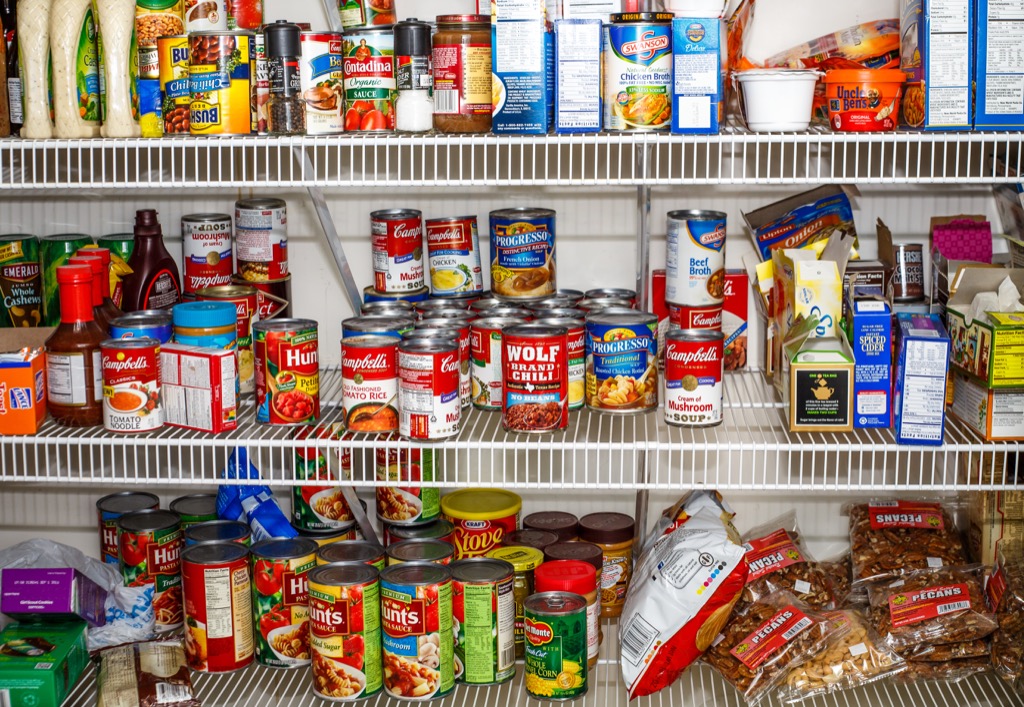
After being linked to birth defects, cancer, and reproductive toxicity, bisphenol A—better known as BPA—has been banned from products geared toward kids and babies, but it's still present in something you might use every day: canned food. In a study from the Center for Environmental Health (CEH), the chemical was found in 40 percent of cans bought at popular grocery stores and 90 percent of canned foods from ethnic grocery stores.
4
Phthalates
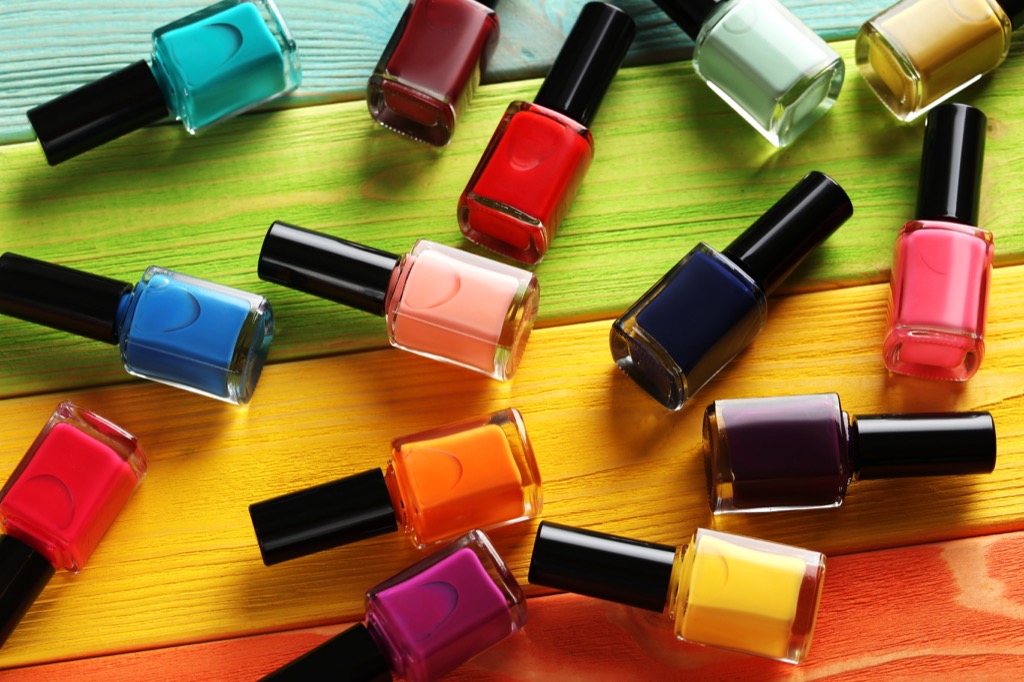
You might not know it, but phthalates are everywhere, whether that's in hair spray, perfumes, nail polish, and other personal care items or shower curtains, food packaging, and other plastics. According to the National Institutes of Health (NIH), swallowing, inhaling, or even touching products that contain phthalates could affect human reproduction or development, as well as potentially cause cancer.
5
Lead

Lead is bad news for your body. According to the Environmental Working Group (EWG), the chemical has been found to cause everything from brain damage and hearing loss to miscarriage and kidney damage. Yikes, right? Unfortunately, it's not only commonly found in old paint, but also drinking water—so grab a water filter and get rid of any lead-based paint in your home, stat.
6
Volatile Organic Compounds
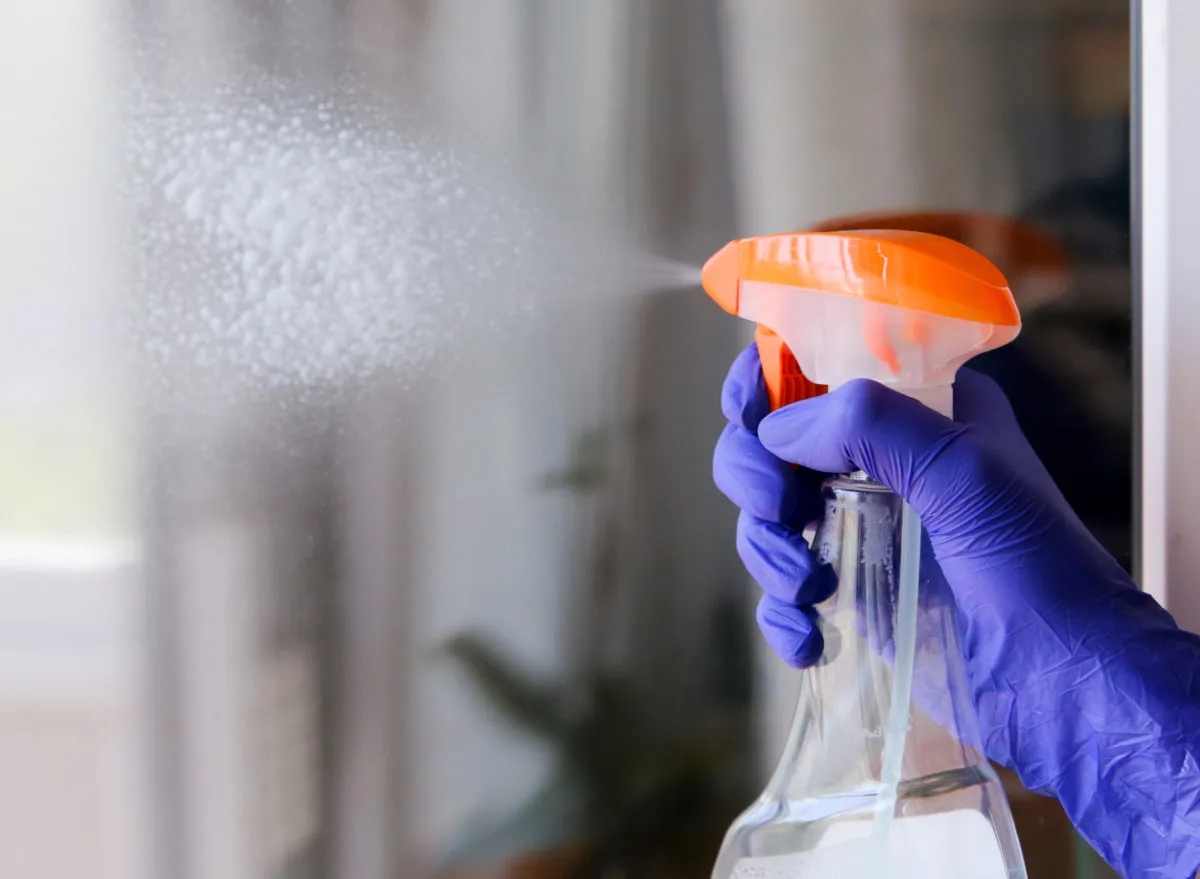
With "organic" in the name, volatile organic compounds (VOCs) can't be bad, right? Well, think again. According to the American Lung Association, the dangerous chemicals—often found in cleaning supplies—don't just cause eye and throat irritation and headaches. They can also cause cancer. The next time you're freshening up your place, think about replacing items like aerosol sprays, detergents, and cleaners with natural and chemical-free options.
7
Flame Retardants

From the 1970s to 2013, furniture companies started using chemicals called flame retardants to prevent fires caused by people's cigarettes. Since people spend a lot of time on their sofas, that's not good news: According to the U.S. Government, the chemicals have been linked to cancer, a reduced IQ, and hyperactivity. Luckily, it's becoming easier to make sure newer furniture you buy is flame retardant–free: In one survey, the CEH found 77 percent of furniture companies are now labeling products so people know whether they contain flame retardants or not, and plenty have removed them altogether.
8
PFSAS

If you make microwave popcorn on the regular, it's time to switch up the habit and whip up a homemade version instead. The CEH found bags from major brands contain toxic chemicals called per/polyfluoroalkyl substances—or PFAS—that enter the popcorn as it's cooking, which can cause many issues, whether that's affecting the immune system and infant birth weights, or putting you at risk of cancer and liver or kidney toxicity.
9
Arsenic

Most people know of arsenic as the deathly ingredient in rat poison, but it's commonly found in food as well. According to the Centers for Disease Control and Prevention (CDC), it may be present in seafood—particularly clams, oysters, scallops, and mussels—as well as in drinking water. The EWG says even small levels could lead to skin, bladder, and lung cancer, as well as affect your hormone functioning.
10
Polytetrafluoroethylene

You might have never heard of polytetrafluoroethylene—or PTFE—but there's a good chance you know of Teflon, the brand name for the man-made chemical. It was created to give cookware those helpful non-stick surfaces that make clean-up a breeze, but any overheating while you're cooking could cause you to breathe in fumes that could lead to flu-like symptoms, says the American Cancer Society.
11
Triclosan

The use of the antimicrobial chemical triclosan was banned in soaps by the FDA, but one household product it's still in? Toothpaste, including the most popular brands. As revealed by a 2017 study in the journal Environmental Science & Technology, it can accumulate on your toothbrush and easily absorb into your bloodstream, putting you at risk of issues with your hormones and gut.
12
Dioxins

There are many things that can mess with your hormones, but both male and females can be affected by dioxins—chemicals that, according to the EWG, have been found to not only affect your reproductive and immune systems, but also cause cancer. The WHO says 90 percent of human exposure is through food. The biggest culprits? Animal products, specifically meat, dairy, fish, and shellfish.
13
Perfluorinated Chemicals (PFCs)
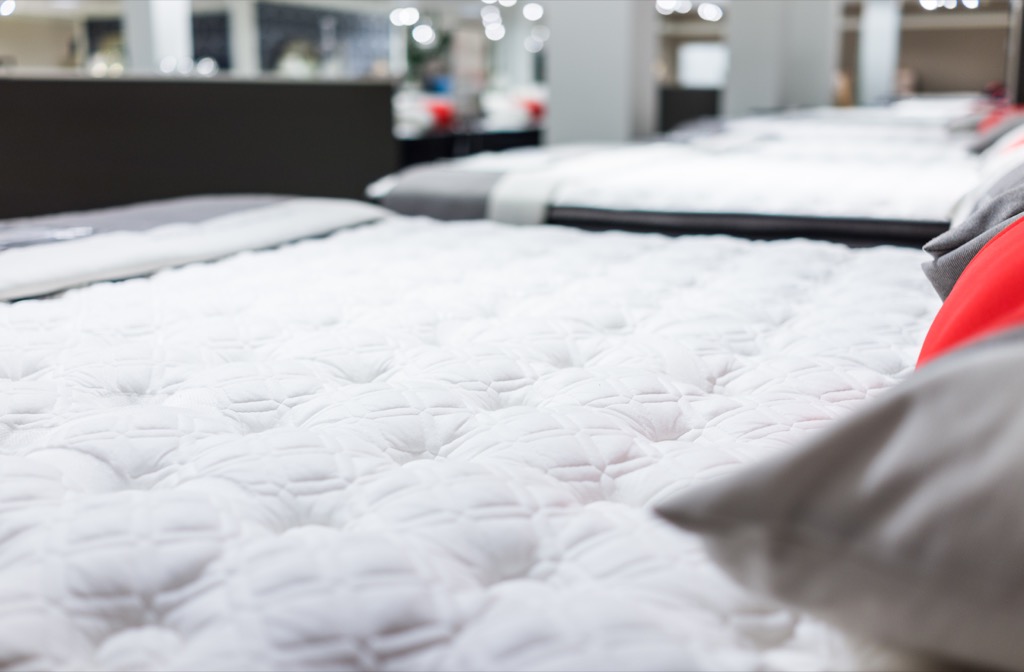
Perfluorinated chemicals (PFCs) are in plenty of products in your home, from cookware and carpets to mattresses and food packaging. Unfortunately, they can potentially affect your health: According to the National Collaborating Centre for Environmental Health, the chemicals have been linked to ADHD and changes in thyroid hormone levels, and animal research has shown negative effects on the liver and pancreas, as well as developmental problems in fetuses.
14
Atrazine
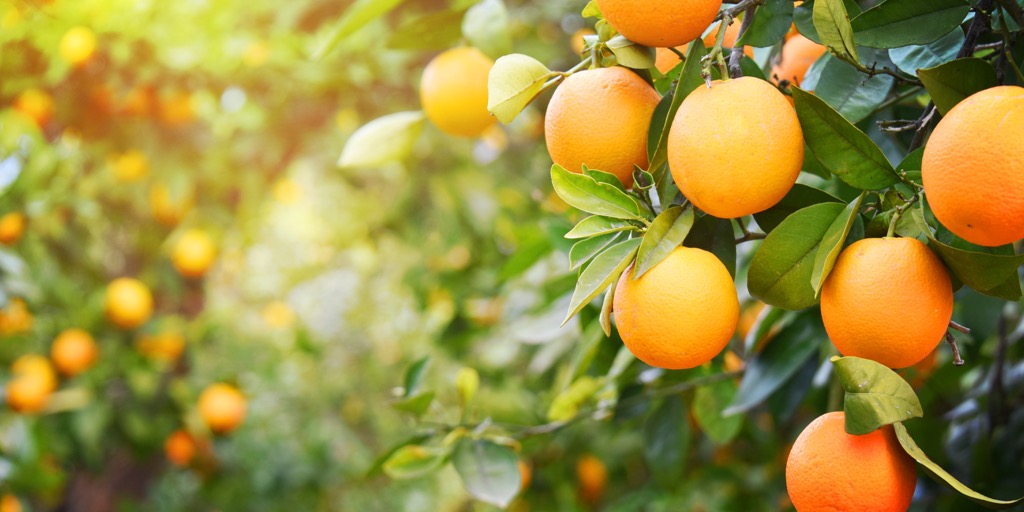
Atrazine—a commonly-used herbicide used on crops—has been linked to some serious health issues, including endocrine disruption, reproductive effects, and cancer, says the Pesticide Action Network (PAN). And because it's used on crops, it's also found in U.S. drinking water—94 percent of it, to be exact. To stay safe, the EWG recommends buying organic produce, as well as using a water filter to remove the chemical.
15
Perchlorate

Perchlorate isn't just a chemical component commonly found in rocket fuel, fireworks, and airbags—it's also found in produce, milk, and drinking water and can cause your body harm. According to the EWG, it's been linked to thyroid hormone balance, which is responsible for regulating your metabolism, as well as brain and organ development in infants and children.
16
Mercury

By now, you've probably heard that having high levels of mercury in your body can put your health at risk—especially in pregnant women, where it can cause problems with the health and development of the fetus, according to the WHO. While exposure through fish and shellfish is probably the most common way to be exposed, it's also in household products like batteries, thermometers, some cosmetics, and lamps.
17
Formaldehyde
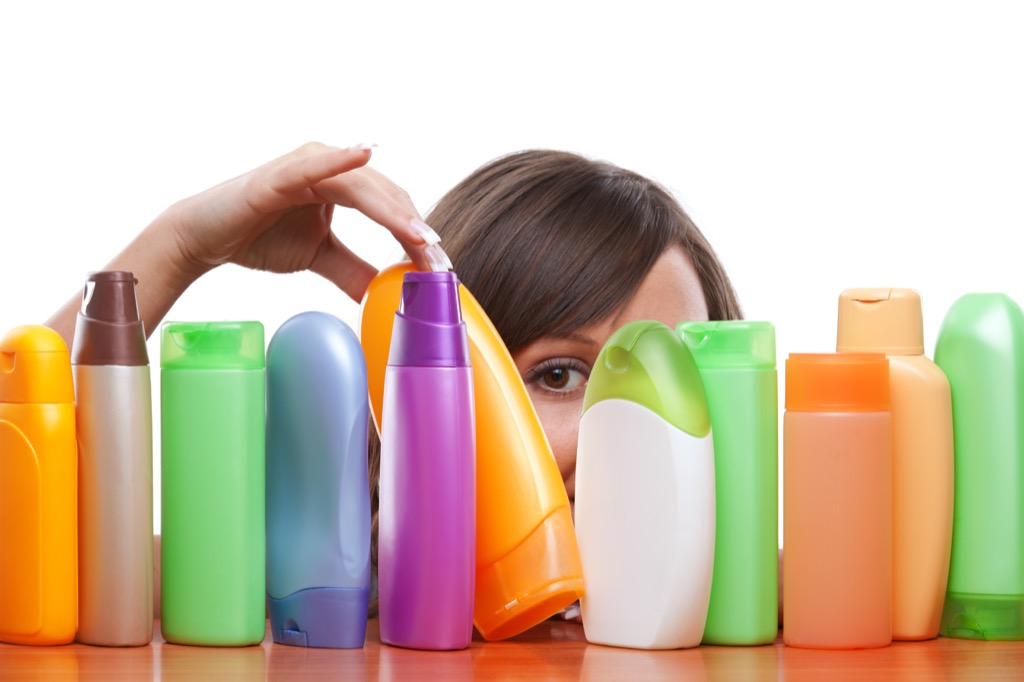
The chemical formaldehyde is hiding in many places in your home, from air fresheners and cleaning products to cosmetics, soaps, shampoos, and lotions. Unfortunately, it's hard to tell whether you're exposing yourself due to all the different names on product labels, says the American Cancer Society, but it's worth taking the extra time to be careful—especially since it's been found to be carcinogenic to humans.
18
Chloroform

Chloroform—that's the chemical you see people getting knocked out with by the bad guys in horror films, via —is actually more common in everyday life than you'd think. According to the EPA, it's released into the air through the chlorination of drinking water, wastewater, and swimming pools, and breathing it in has been found to cause everything from liver problems and depression to cancer.
19
Polybrominated Diphenyl Ethers

Polybrominated diphenyl ethers—otherwise known as PBDEs—are commonly used as flame retardants in mattresses. Getting an option that uses the chemical could potentially cause neurobehavioral effects in humans, says the EPA, so it's worth going for a natural, non-toxic option when shopping—even if it costs a little extra. Especially since you spend up to eight hours a night lying on it.
20
DEET

DEET is used in many insect repellents and is the ingredient that keep ticks and mosquitoes from biting. The only issue? It could cause some health problems. According to the CDC, using products with a high concentration of the chemical—or being exposed to high amounts of it—could lead to skin and mucous membrane irritation, as well as skin rashes and blisters. Luckily, DEET toxicity typically comes from not using the products properly, so make sure to pay close attention to the directions to ensure you don't have any negative side effects.
21
Toluene

There's nothing more relaxing and mood-boosting than lighting a scented candle—that is until you find out about all the toxic chemicals that drift through your home because of it. A study out of SC State University found burning candles releases alkans, alkenes, and toluene into the air, all of which can put your health at risk.
"For a person who lights a candle every day for years or just uses them frequently, inhalation of these dangerous pollutants drifting in the air could contribute to the development of health risks like cancer, common allergies, and even asthma," said lead researcher Ruhullah Massoudi in a press release.
22
Nonylphenols
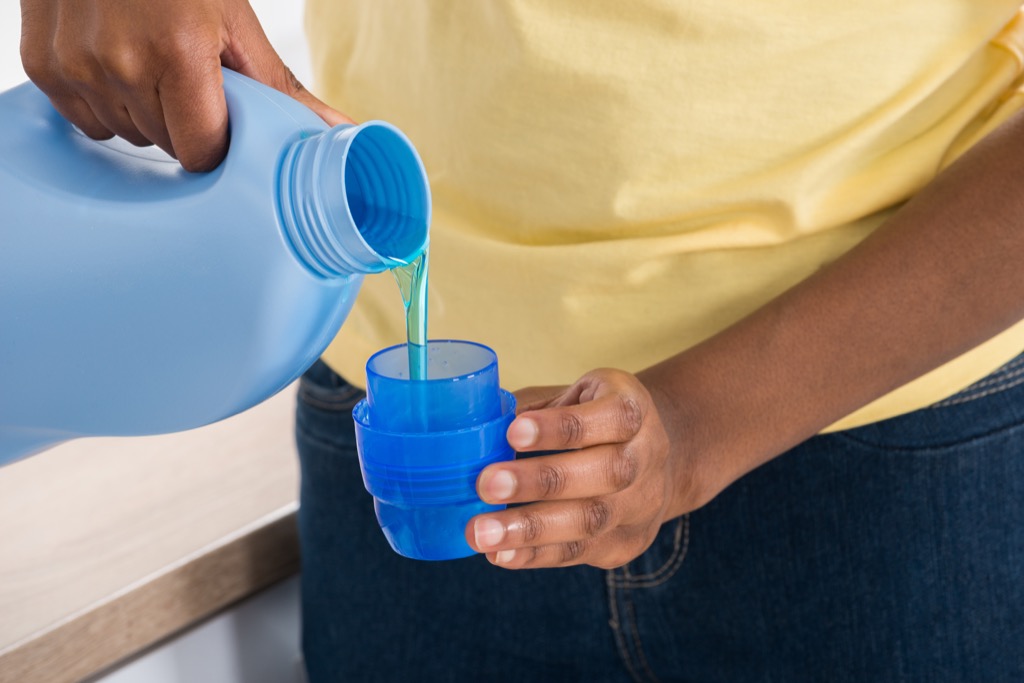
Nonylphenols are often found in laundry detergents and personal hygiene products, and according to the EPA, the chemical has been detected in human breast milk, blood, and urine. It turns out that exposure might not be a good thing—especially since past studies have shown it causes reproductive and developmental problems in rodents.
23
Aluminum
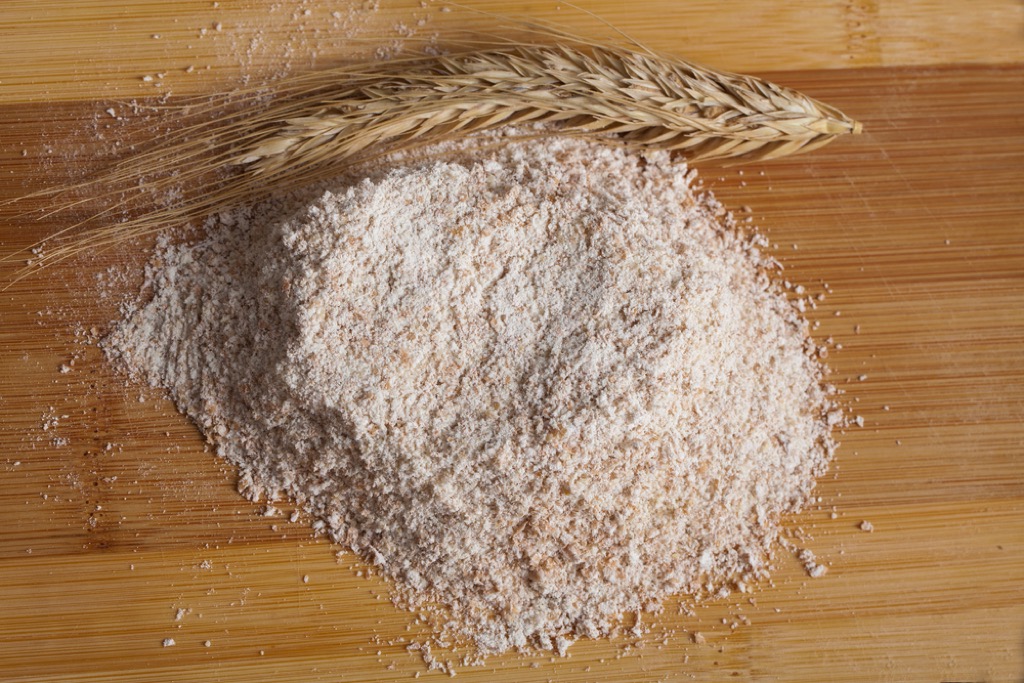
Aluminum is used in everything from beverage cans and pans to the foil you save leftovers with, but most people are exposed through their food. According to the Agency for Toxic Substances and Disease Registry (ATSDR), the average adult takes in 7 to 9 mg every day through food processing, like in flour and coloring agents. Unfortunately, some studies have shown being exposed to high levels could cause Alzheimer's disease, although that's not completely proven, as well as bone or brain diseases in those with kidney disease. For more on how to stay healthy, check out 40 Ways to Never Get Sick After 40.
To discover more amazing secrets about living your best life, click here to follow us on Instagram!





















